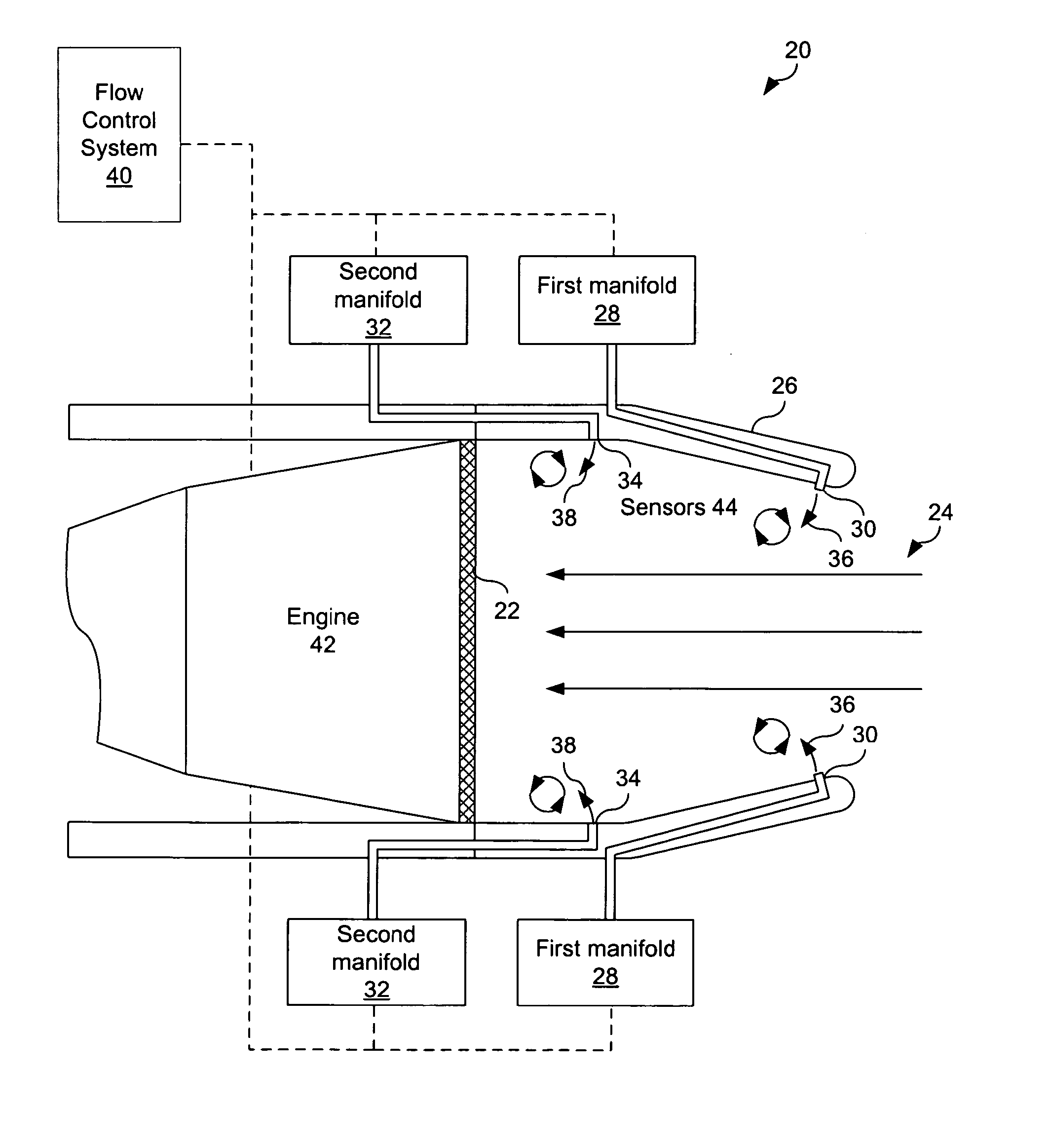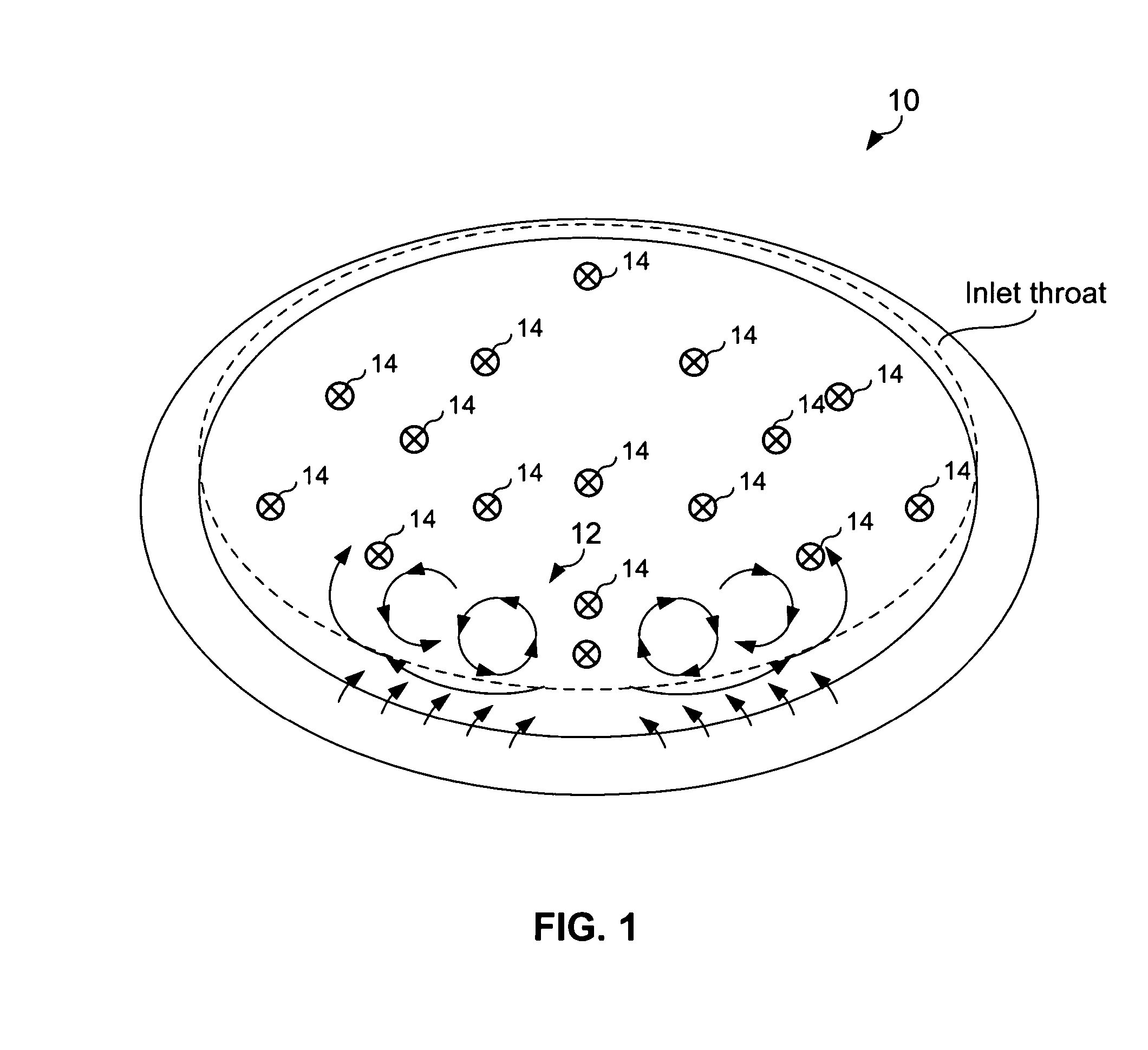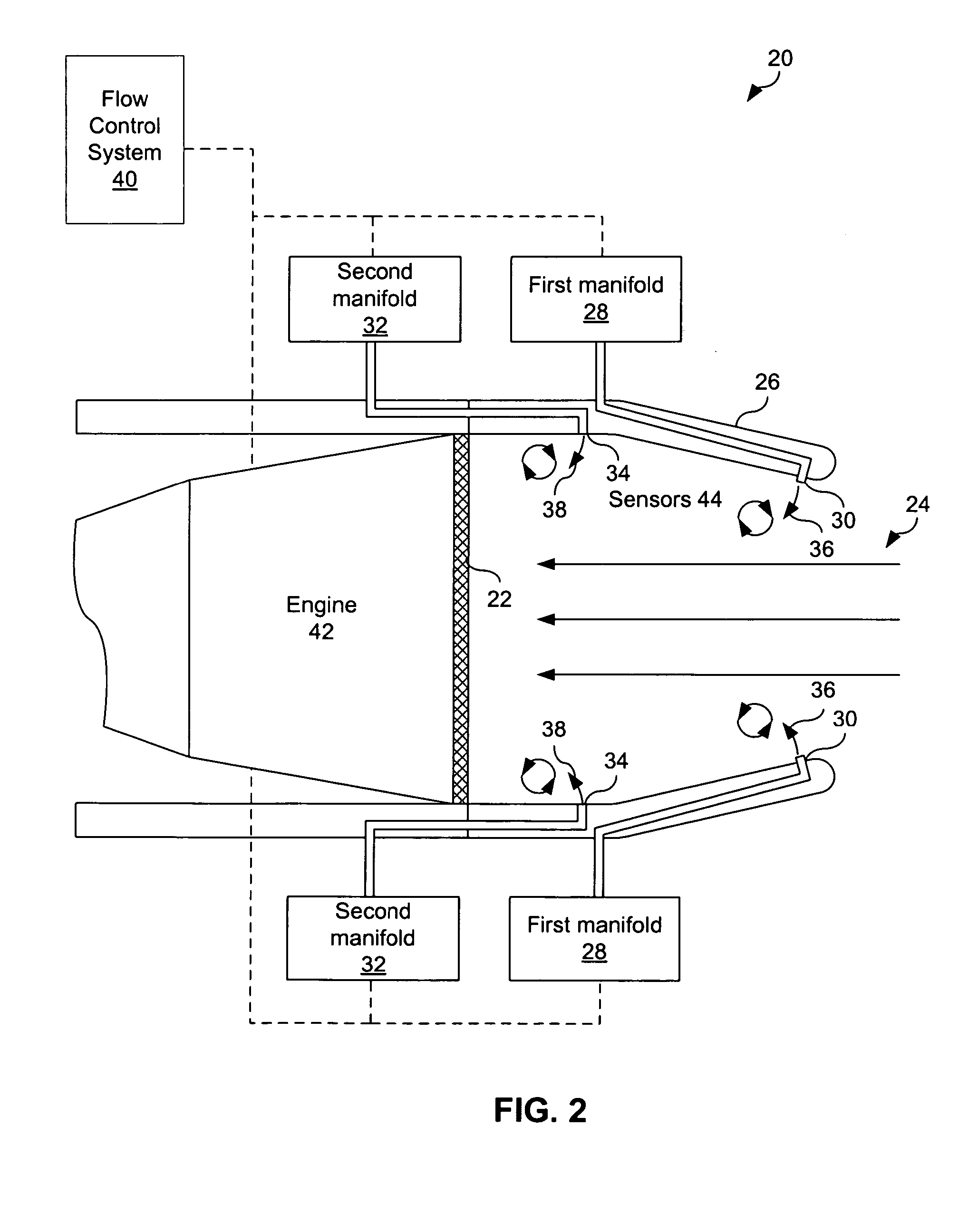Flow control redistribution to mitigate high cycle fatigue
a flow control and high cycle fatigue technology, applied in the direction of machines/engines, combustion-air/fuel-air treatment, transportation and packaging, etc., can solve the problems of reducing engine performance, poor performance, and uneven above-effects of the engine, so as to reduce the weight and cost of the engin
- Summary
- Abstract
- Description
- Claims
- Application Information
AI Technical Summary
Benefits of technology
Problems solved by technology
Method used
Image
Examples
Embodiment Construction
[0022] Preferred embodiments of the present invention are illustrated in the figures like numerals being used to refer to like and corresponding parts of the various drawings.
[0023] The present invention provides a system and method for manipulating fluid flow within an inlet that substantially eliminates or reduces disadvantages and problems associated with previously developed systems and methods. More specifically, the present invention provides a system and method to improve pressure recovery and distortion within a flow inlet and reduce buffeting or fatigue to engine components through the use of jet vortex generators. This system and method includes the placement of jet vortex generators on surfaces bounding the fluid flow. These jet vortex generators manipulate the flow behavior at this boundary of the fluid flow, to reduce flow separation within the primary fluid flow and improve pressure recovery and distortion.
[0024]FIG. 1 provides a three dimensional flow field within a...
PUM
 Login to View More
Login to View More Abstract
Description
Claims
Application Information
 Login to View More
Login to View More - R&D
- Intellectual Property
- Life Sciences
- Materials
- Tech Scout
- Unparalleled Data Quality
- Higher Quality Content
- 60% Fewer Hallucinations
Browse by: Latest US Patents, China's latest patents, Technical Efficacy Thesaurus, Application Domain, Technology Topic, Popular Technical Reports.
© 2025 PatSnap. All rights reserved.Legal|Privacy policy|Modern Slavery Act Transparency Statement|Sitemap|About US| Contact US: help@patsnap.com



